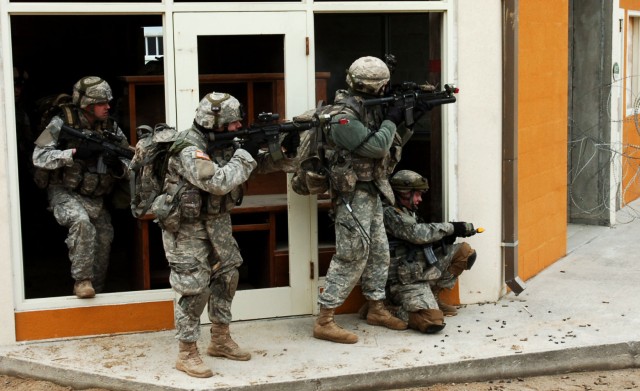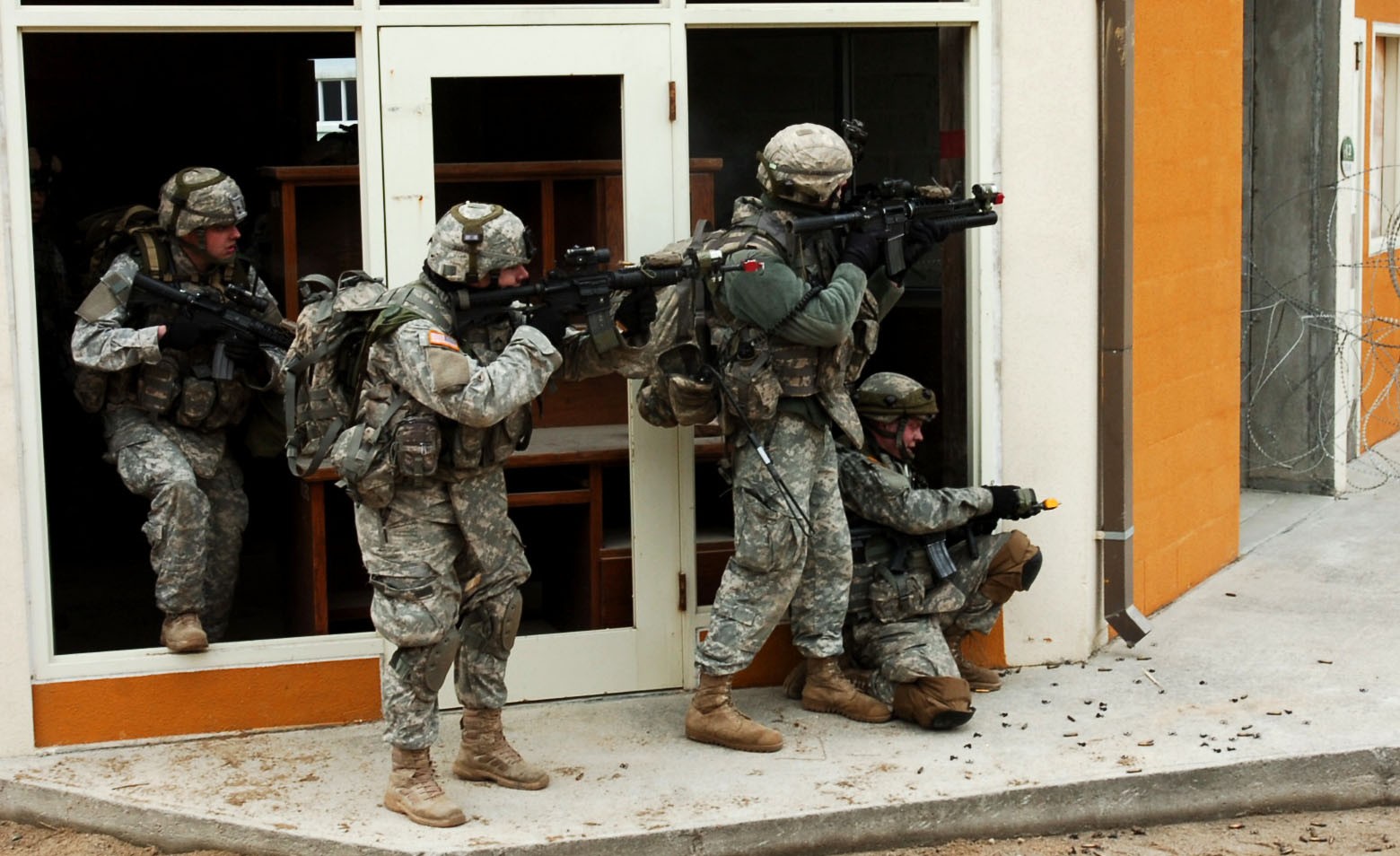
CAMP CASEY, Korea -- The explosions and gunfire lit up the Korean Training Center Feb. 4-13 during Warrior Focus 09-01, and the Soldiers of 1st Heavy Brigade Combat Team fought and executed a unique brigade level operation by employing high-end technology and inventive training techniques.
Warrior Focus, a 2nd Infantry Division training exercise, enabled the brigades of 2ID the opportunity to have training focused at the battalion levels of command. 1HBCT focused primarily on training 1-72 Armor Regiment and 302nd Brigade Support Battalion, while the remaining battalions acted as opposition forces, observer controllers, and also provided administrative and logistic support to the exercise.
The exercise enhanced the Brigade's ability to prepare for combat operations by incorporating real and simulated operations, with some Soldiers conducting boots on the ground training at KTC and others conducting training in a virtual world.
"We're doing operations between the live and the virtual world," said Maj. Jaren K. Price, the brigade intelligence officer. "So it really works on combining all those individual tasks that we work on in the day-to-day basis. In the training we're using what we call a LVC; a Live, Virtual and Constructive exercise."
Applying LVC to the operation equipped 1HBCT with an increased capability to train, despite the land and space limitations.
"There's not a lot of (training) maneuver land here, so trying to put a whole brigade out here is difficult," said Price. "The LVC allows us to train the brigade by having Soldiers actually on the ground, in the virtual and in the constructive. They all report in just like they would in real life, so the command post has to deal with information from all their subordinate units."
The Soldiers involved in the Live portion spent their days and nights in the field, working with other 2ID and ROK units, dealing with the enemy, and the daily aspects of combat operations.
"The troops are doing pretty good," said Cpt. Pace Brown, the commander of B Co., 302nd Brigade Support Battalion. "Once the first day was over, they were rocking and rolling. Everyone knew what they had to do. They knew to attack their work, whether they would be on the ECP (entry control point) gate or supporting the battalion."
The scope of the exercise allowed Soldiers' the opportunity to realize the value of the training they received.
"In the training exercise, I learned that you have to be prepared," said Pfc. Powell Jerron, water treatment specialist from A Co., 302nd BSB. "It's easy to take training for granted, but it's good to be prepared no matter who you are, because you never know what will be expected of you or what you'll have to do."
As Soldiers from 1-72nd and 302nd maneuvered their vehicles and engaged in combat operations at KTC, others in the Close Combat Tactical Training building at Camp Casey were fighting alongside them in the computer-simulated Virtual aspect of the training.
"The virtual side of the exercise is real Soldiers on simulated equipment," said Maj. Judson C. Strom, the brigade plans officer. "Soldiers from 1-72 Armor Regiment are sitting inside the simulators at the CCTT building and, because they're linked using the MILES system, they can see the exercise on their screens. They'll be able to see the vehicles from their sister companies training right next to them. They move as one with the rest of the battalion."
The Virtual portion offers more to the exercise than just impressive technology, it also maximizes the number of Soldiers that are able to be trained.
"When you walk into CCTT, it looks like a warehouse full of tan cubes, but when you go in one of them you see all the controls," said Strom. "The inside of that box looks exactly like a Bradley or a tank. The Soldiers get to practice on their equipment and participate in the exercise, despite KTC being so small. This way all four companies get to participate at one time."
While the Soldiers in the Live and Virtual actually drive their vehicles during the exercise, the Soldiers in the Constructive perform a different role. They use a computer, containing a map of the operation and icons representing vehicles and units, to plan maneuvers.
"The Constructive part is like a board game or a war game," said Price. "They're not actually driving vehicles, but they plan how to move their forces and they move them in a computer simulated map that allows them to fight inside that same simulation."
The Constructive portion creates a vivid battle image for command and, at the same time, gives the Soldiers involved the responsibility of acting as battle commanders within the exercise.
"We're here to paint a picture of the battlefield that we can send up to the TOC (Tactical Operations Center) so that they can make decisions based on things that are going on in the virtual world," said 2nd Lt. Brian Derickson, the scout platoon leader for Comanche Troop, 4-7 Cav. "Our part in this exercise coincides with the other units that are actually in the field."
The Constructive Soldiers must also stay in close contact with the command and carefully plan each move to coincide with the actual Live events.
"The Soldiers have been given a little more responsibility than they usually have, but they've taken it up with the attitude of a Soldier," said Derickson. "They've done an excellent job; they've always been concerned with making certain that every move they make is tactically correct and that it's reported up as it would be in the real world."
Even though the primary training audience was only two battalions within the brigade, the unique exercise provided training for Soldiers, staffs, and leadership at all levels.
"It requires an event like this to train the brigade and battalions war fighting capabilities," said Maj. Roger Darrell Osteen Jr., the brigade S-3 operations officer, "and even though this exercise was complex and had many moving parts, I think the training that we conducted, both live and virtual, was nothing less than superb."

Social Sharing